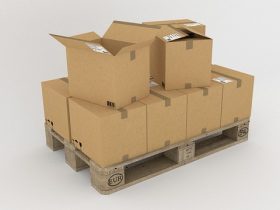The data you need to provide on a direct deposit form is a bank account number. The employer knows your account number and routing number; sometimes, you can choose a percentage instead. These are the most common details that employers need to process the deposits. In this article, you’ll learn how to enter this information and what other important details to include. Then, follow the steps outlined in this article to set up a direct deposit for your company.
Routing number
A routing number is an account identifier for your bank. This number is required for payroll direct deposit, automatic loan payments, recurring transfers such as bill payments, tax refunds and more. You may also need this number for ACH transfers between accounts. If you’ve had a bank account for several years, you may want to review your latest statement to make sure you’re using the correct one. You can also view your routing number by state.
Some employers prefer to deposit funds by using a voided check or a deposit ticket. The latter will ensure that your check is rendered useless in case it is stolen or lost. To avoid this, you must complete the direct deposit form and submit it to your employer. However, you should be aware that it can take several weeks to deposit your funds. Until you receive your money, monitor your bank account regularly to make sure your money has gone into your account.
Account number
When setting up Direct Deposit, the account number will be your bank routing number. If you are unsure of the number, contact your financial institution. Double checking the numbers will ensure the transaction is completed without any delays or charges. Account numbers with dashes should not be used. A valid MICR number is the best choice. Make sure that your bank’s routing and transit numbers match the ones you have listed.
In some instances, an incorrect account number may prevent your direct deposit from going through. If you have an incorrect account number, the bank could reverse the deposit or return the money to the payroll department. A correct account number is vital for direct deposit to be successful. You can find the account number on your checks or online statements. Look at the top right corner of the statement, just below the date range.
Paycheck amount
Depending on your employer, you can set up a direct deposit for one or more accounts. You can also enter a prior date, such as two weeks ago. Then, submit the information to your employer. In some cases, you may need to provide a voided check to process the direct deposit. Once you’ve approved the new information, the amount will be deposited into your account. If you’ve already set up a direct deposit for one account, you can skip this step.
The most important information on the direct deposit form is the employer’s bank or credit union account information. Make sure you have your account number and routing number readily available to your employer. In addition, the amount of deposit is generally equal to the amount of the check, although some employers will let you choose a percentage to deposit. It is also important to note that if you’re changing your employer’s bank account, you can still choose to use a direct deposit if you want to keep the same amount of money.
Employee’s name
When setting up direct deposit, employees must provide a few essential information. The name of the bank and account number of the employee are both necessary. The employee’s account number is found on his or her personal checks, and the routing number is the nine-digit identification code that is posted on the bank’s website. In addition to the employee’s name, the payroll provider will need the percentage he or she wants to deposit from his or her paycheck.
Generally, direct deposit requires the employee’s name and bank account number. An employee should fill out a form requesting this option. It is important that the employee submit the form securely, as the form contains sensitive account information. It is advisable to submit the form directly to the payroll department or send it to a bank via secure file transfer. This form will not be accepted if the employee works remotely. Ensure that employees sign their names on the form so that it will be processed correctly.









